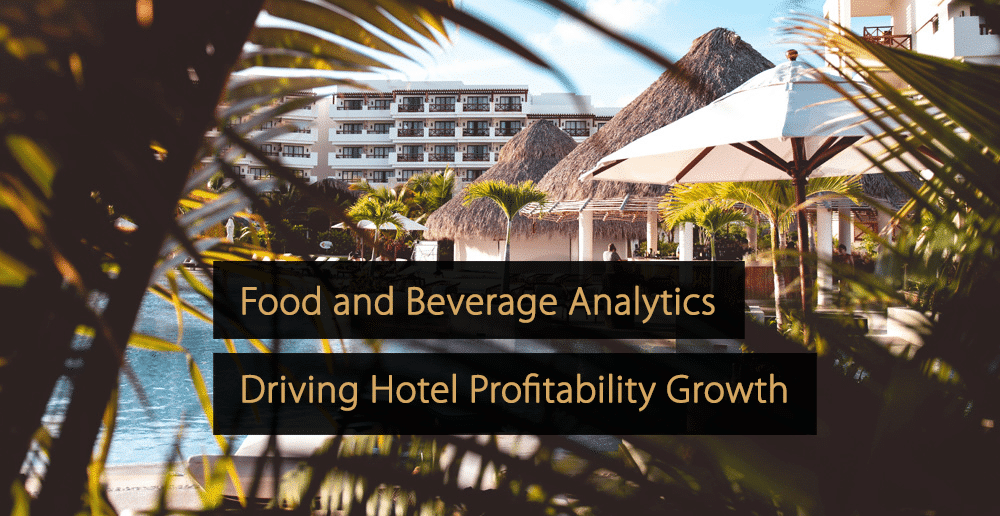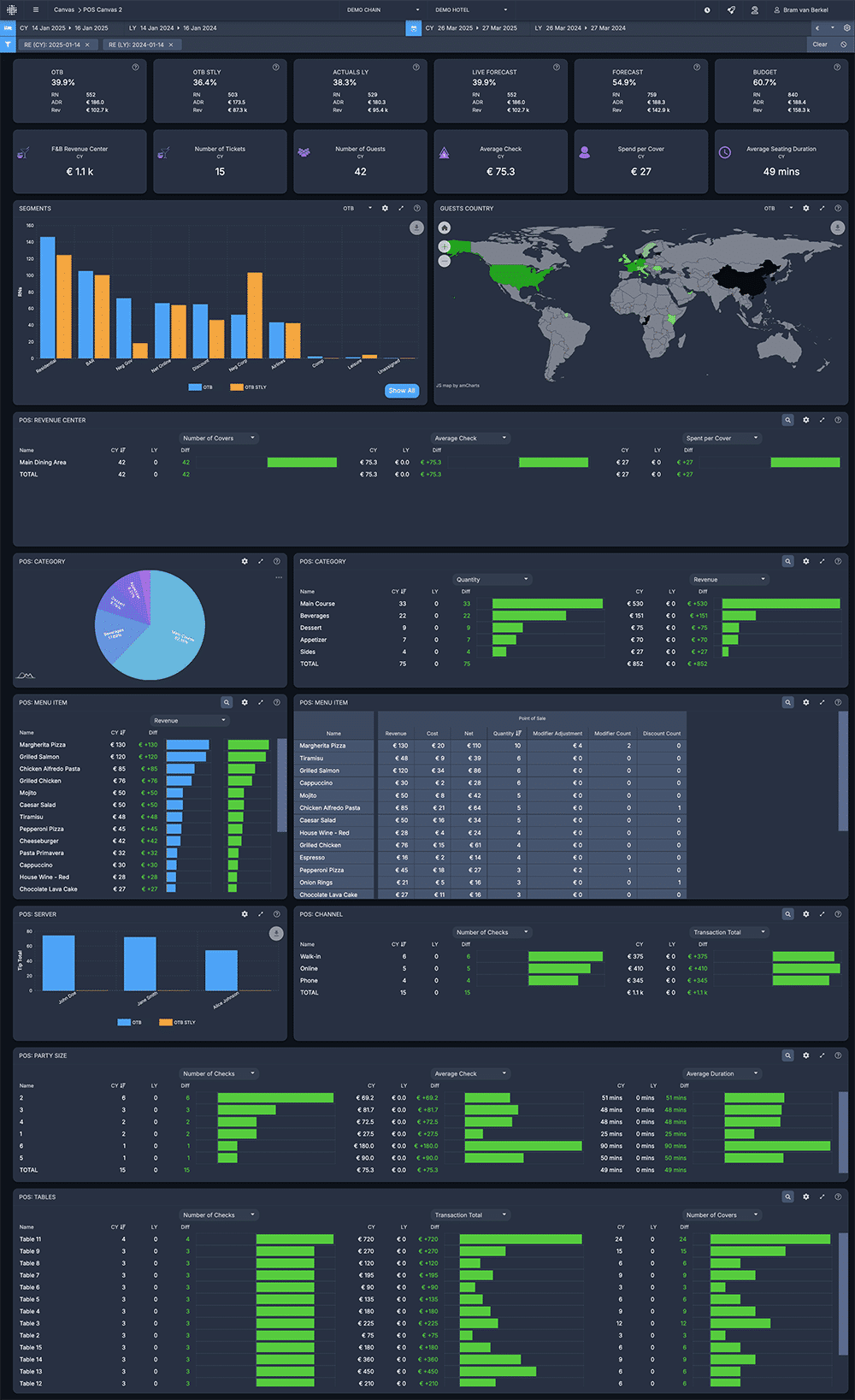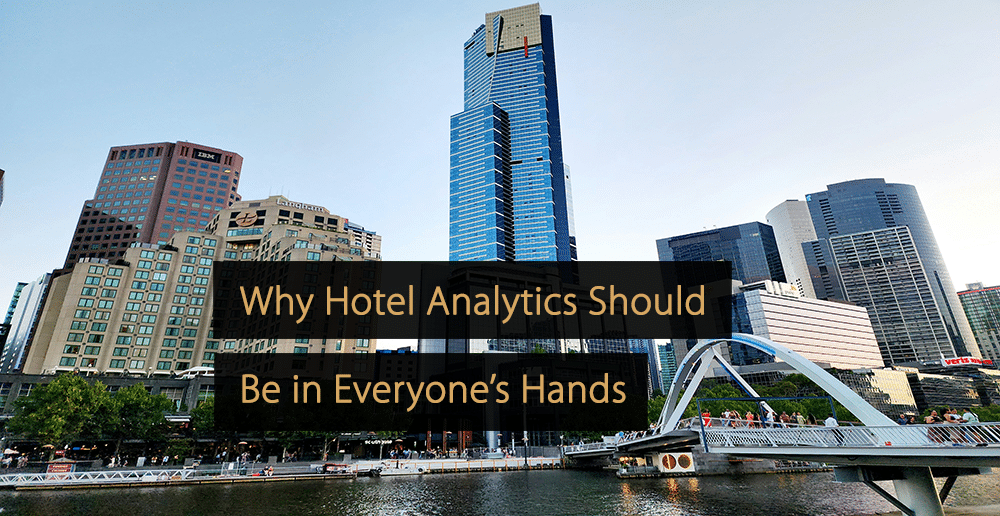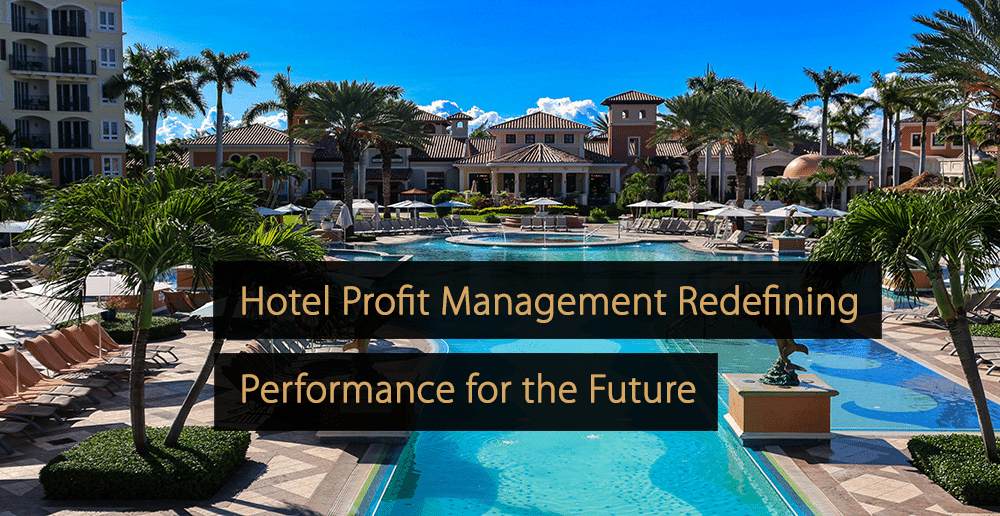In lifestyle and full-service hotels, Food and Beverage (F&B) can generate 40–50% of total revenue. Sustaining profitability means attracting and retaining high-value guests, boosting in-house spending, ensuring satisfaction, and controlling costs. Yet data silos make this difficult, with PMS, POS, and finance systems often disconnected. While hotels focus on room revenue, F&B is equally essential, especially in resorts and lifestyle properties.
In this article, you’ll learn strategies and tools to optimize F&B performance and profitability.
Why F&B Matters More Than You Think
Food & Beverage (F&B) operations represent a critical and complex revenue driver. Hotels often focus heavily on managing room revenue because data is more readily available and behaviours are more easily influenced through Marketing and Revenue Management. F&B outlets can account for a substantial share of total revenue and profit, especially for full-service hotels, resorts, and lifestyle properties. Managing F&B profitability requires control over costs and a deep understanding of guest spending behaviors. This is where advanced analytics and smarter data integration are making a big impact.
The Commercial Perspective: Tracking Every Revenue Stream
The first step toward improved profitability is understanding where revenue comes from and how it fluctuates: what are the trends? Advanced analytics platforms can now provide real-time insights across multiple dimensions: booking channels, market segments, guest nationalities, and, for example, lead time/length of stay.
These tools enable hoteliers and F&B managers to track performance trends and revenue pick-up patterns, making it easier to focus on the most lucrative segments, markets, and timing opportunities. What type of hotel business is linked to what type of F&B business?
For example, incorporating lead time data with guest spending behaviors can reveal which guest types are most likely to dine at your restaurant or order in-room dining. This, in turn, informs targeted marketing campaigns or tailored packages that drive ancillary revenue.
Understanding the relationship between guest length of stay and in-house spending can influence pricing and upselling strategies. Guests staying multiple nights often have higher F&B spend, so offering meal packages, F&B credit, or discounts on repeat visits can further enhance revenue.
The Finance Perspective: Maximizing Flow-Through
Given the high proportion of fixed costs compared to variable costs in hospitality, maximizing “flow-through” is essential. Flow-through refers to the percentage of incremental revenue that converts to profit, and it can vary significantly by revenue stream. Rooms, Food & Beverage, Meetings & Events, and Spa each have different cost structures and operational realities that impact their profitability potential.
To make informed decisions, hoteliers should reorganize their Profit & Loss (P&L) reporting around the customer. Understanding which guest segments contribute most to the bottom line allows teams to allocate resources more effectively.
Key metrics to monitor include:
- Revenue per Available Room (RevPAR) – Evaluates room revenue efficiency.
- Total Revenue per Available Room (TRevPAR) – Expands this view to include F&B and ancillary services.
- Flow-Through Percentage – Tracks how much of the additional revenue turns into profit.
Beyond these high-level metrics, granular KPIs provide valuable insights into operational efficiency. Some examples for Food & Beverage:
- Cost of Goods Sold (COGS) %: Food and beverage cost as a percentage of total F&B revenue.
- Revenue per Available Seat Hour (RevPASH): Measures how efficiently dining space generates revenue.
- Labor Cost % in F&B: Payroll expenses relative to total F&B revenue.
- Waste %: Food wastage as a percentage of purchased inventory.
The F&B Perspective: Granular Profitability Management
F&B outlets are dynamic operations with numerous variables impacting profitability. Unlike rooms, which have predictable inventory constraints, restaurants and bars must constantly balance table turnover rates, menu pricing, labor costs, and ingredient purchasing.
Hospitality analytics platforms now integrate data from POS systems, PMS, and financial software, providing a 360° view of performance across the F&B domain. Managers can track how long tables are occupied versus the revenue generated, identify underperforming menu items, profitability across a multitude of dimensions, and align staffing with peak service hours.
Key Drivers of Food and Beverage Profitability
Maximizing F&B profitability requires focusing on specific operational areas that directly impact revenue, cost efficiency, and overall guest satisfaction. Here are some of these areas:
- Table Turnover & Average Spend: Monitoring the relationship between table duration and spend per visit can highlight opportunities to optimize service flow and seating efficiency.
- Menu Engineering: Analyzing which items have the highest margins and popularity helps shape a more profitable menu. Poor-performing dishes can be repriced, reworked, or replaced entirely.
- Labor Efficiency: Staffing is one of the highest variable costs in F&B. Matching staffing levels to anticipated demand avoids unnecessary payroll expenses while ensuring service quality.
- Variable Expense Control: Managing the Cost of Goods Sold (COGS) tightly can significantly improve margins. This includes negotiating with suppliers, minimizing food waste, and standardizing portion sizes.
Analyzing POS data may reveal that a popular appetizer delivers minimal incremental profit after factoring in preparation time and ingredient costs. With this insight, management can adjust the pricing, simplify the recipe, or replace the dish to improve profitability.
Integrating F&B Data With the Guest Journey
F&B analytics becomes even more powerful when integrated with guest journey data, for example, from the PMS. Understanding who your guests are, when and how they book, and how they spend allows for personalized experiences that drive higher revenue.
For instance, data might show that repeat leisure guests typically book through direct channels and spend more on premium beverages. This insight can inform targeted pre-arrival upsell offers or loyalty rewards focused on F&B.
Similarly, for group business or meetings, tracking past banquet and catering spend enables more accurate forecasting and tailored package creation. The goal is to ensure that every guest interaction/transaction maximizes profitability and guest satisfaction.
Building a Holistic Revenue Management Culture
The most successful hospitality businesses treat F&B analytics as a core component of overall revenue management, not as an isolated function. Building an all-encompassing revenue management culture involves breaking down departmental islands, having a single source of truth when it comes to data, and fostering collaboration between front-of-house, back-of-house, finance, and sales teams.
Regularly sharing key metrics and insights across departments encourages accountability and aligns everyone toward common goals. For example, housekeeping can better align cleaning schedules with F&B event timing, while marketing can develop promotions based on peak dining patterns identified by analytics.
When all departments work together, hotels are better equipped to capture incremental revenue, reduce unnecessary costs, and deliver a seamless guest experience.
Benefits of a Cross-departmental, Data-Centric Approach
When hospitality businesses adopt a holistic approach to revenue and cost management, the benefits extend across the entire operation:
- Improved Profitability: By analyzing flow-through and optimizing each revenue stream, hotels can increase margins without compromising guest experience.
- Better Resource Allocation: Data-driven insights help managers focus on the most profitable customer segments, services, and periods.
- Enhanced Guest Satisfaction: Personalizing offers and improving service quality based on data leads to happier, more loyal guests.
Free Checklist: Start Using Data in Your Hotel’s Decision-Making
Using data to power insights and decisions at your Hotel can position you for commercial success, help increase guest satisfaction, and reduce costs. This checklist provides a starting point for hoteliers new to data analytics in the hotel industry.
Click here to download the checklist “Start Using Data in Your Hotel’s Decision-Making“.
F&B Analytics goes beyond sales tracking to reveal true profit potential. By fostering a data-driven culture, tracking the right KPIs, and unifying systems, hotels can make smarter decisions, optimize performance, and drive sustainable growth across all revenue streams.
More Tips to Grow Your Business
Revfine.com is the leading knowledge platform for the hospitality and travel industry. Professionals use our insights, strategies, and actionable tips to get inspired, optimize revenue, innovate processes, and improve customer experience.Explore expert advice on management, marketing, revenue management, operations, software, and technology in our dedicated Hotel, Hospitality, and Travel & Tourism categories.









Leave A Comment